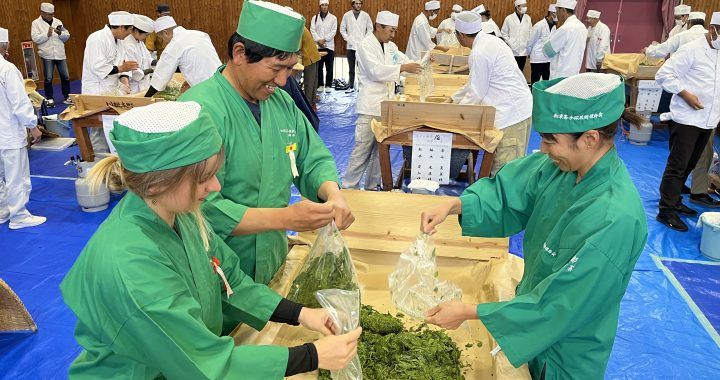On the 13th of November 2025, the National Hand Rolling Competition was held in the city of Fujieda, Shizuoka Prefecture. Yearly, the Wazuka Hand Rolling Preservation Society participates and this year was no exception. In 2023, the team consisting of Kenta-san, Simona, and Akky-san secured first place. Last year, Pau also had the opportunity to compete—if you’d like to read about his experience, check out the blog HERE. This year, Wazuka had two teams: Team A (Akio-san, Minato-san, and Nishiyama-san) and Team B (Kenta-san, Miwako, and myself). It is both humbling and inspiring that Obubu members get to take part on this national stage of hand-rolling among so many talented and skilled tea makers from across Japan. This year, Akky-san, Pau, Nanako-san, and Aimi-san (the newest member of the association) joined us as cheerleaders and supporters.
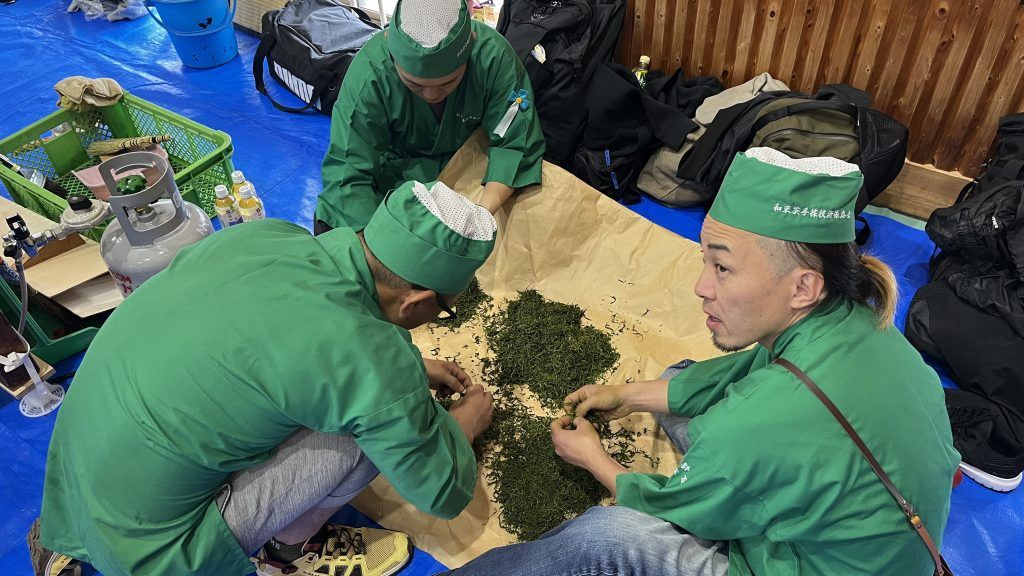
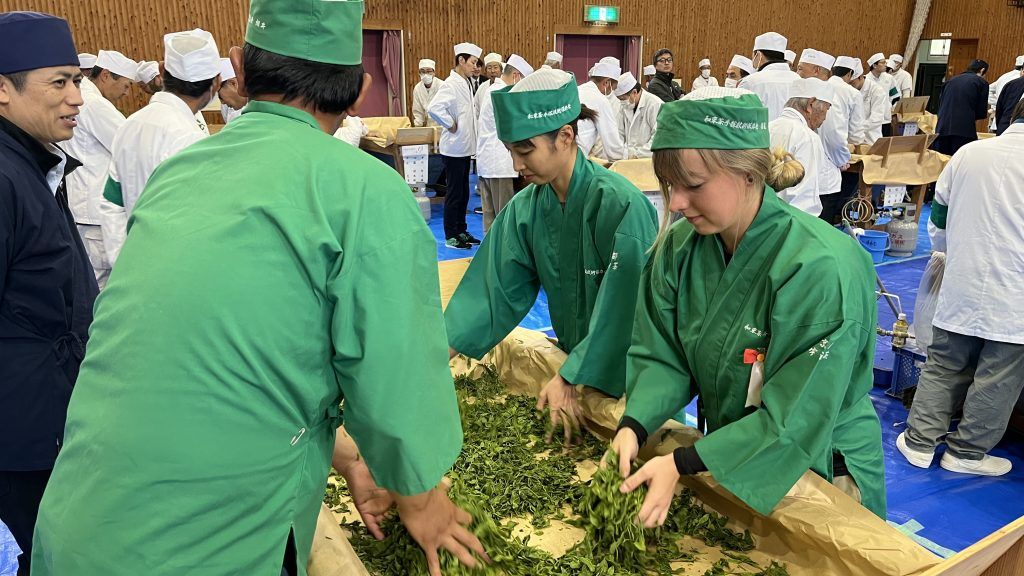
We left Wazuka as early as 3 AM and arrived in Fujieda just before 8 AM. While resting in the car in the parking lot, we watched hoiro tables and gas tanks being unloaded for the event. One pink keitora truck especially stood out. We read the competition rules and regulations as we waited. The organisers’ greeting began at 8:30 AM, and around 9 AM we received our 3 kg of tea leaves—the moment when our five hours of rolling officially began. As Pau has noted last year, our hand-rolling practices usually last around 6 to 7 hours, thus, finishing the sencha under 5 hours was a fun challenge. This year, 26 teams participated, representing Shizuoka, Nara, Niigata, Fukuoka, Nagasaki, Saitama, Kyoto, Mie, Kagoshima, Tokyo, Wakayama, Gifu, Ibaraki, Aichi, and Tochigi.
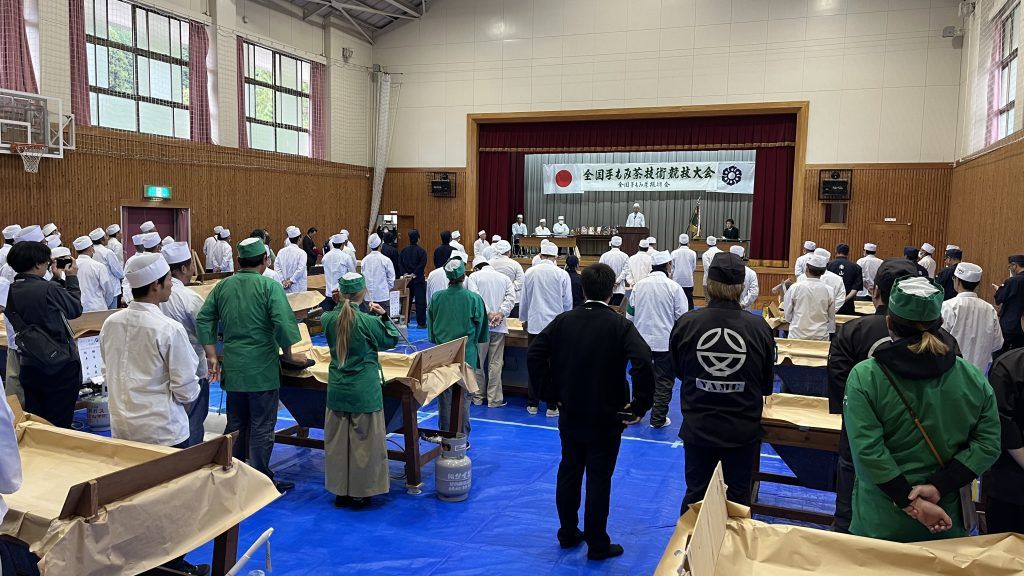
The leaves were wonderfully soft and easy to work with, albeit the exact origin and cultivar remains unknown. While fully focused on rolling, I still caught glimpses of how each region has its own distinct style—something remarkably fascinating. Shizuoka teams, for example, began rolling earlier than those from Kyoto, including us, as we continued haburui (tossing) for quite a while. Some teams’ yokomakuri (rolling and kneading) styles appeared to be faster paced than what I’ve learned in Wazuka, thus, some teams finished considerably earlier than us. I didn’t get to observe much more, as we stayed committed to our own leaves, but it made one curious to join the competition one year purely as an observer, to learn more closely from all these highly skilled individuals. With half an hour left on the clock, we spread the leaves out for their final drying. We made it right on time!
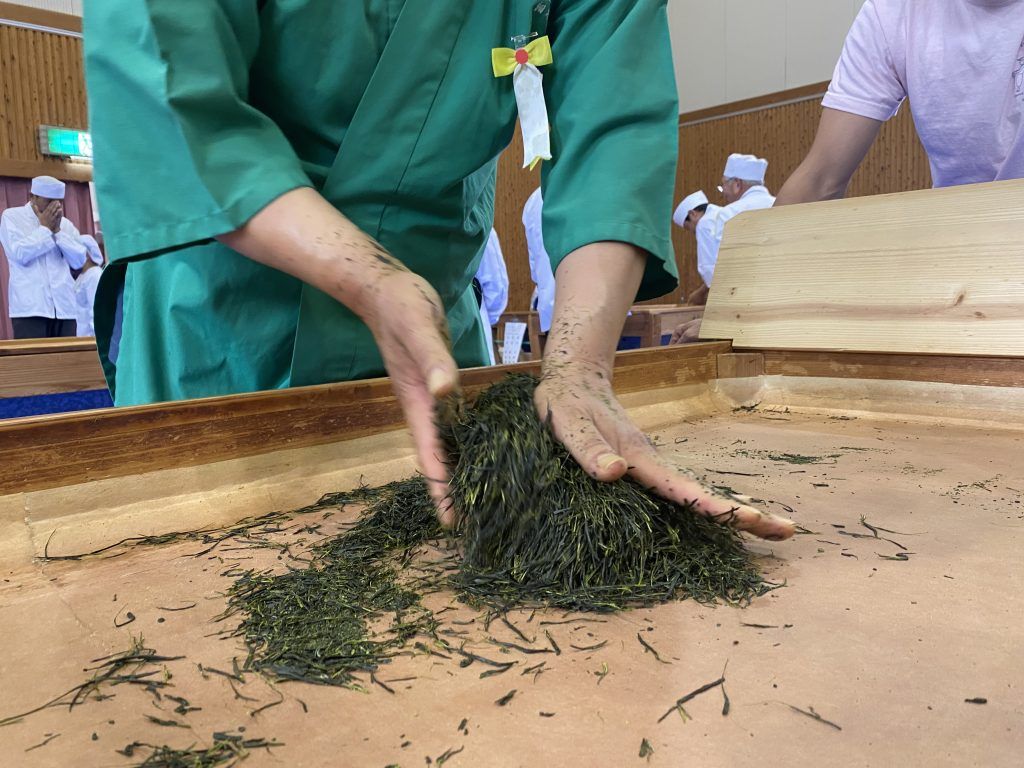
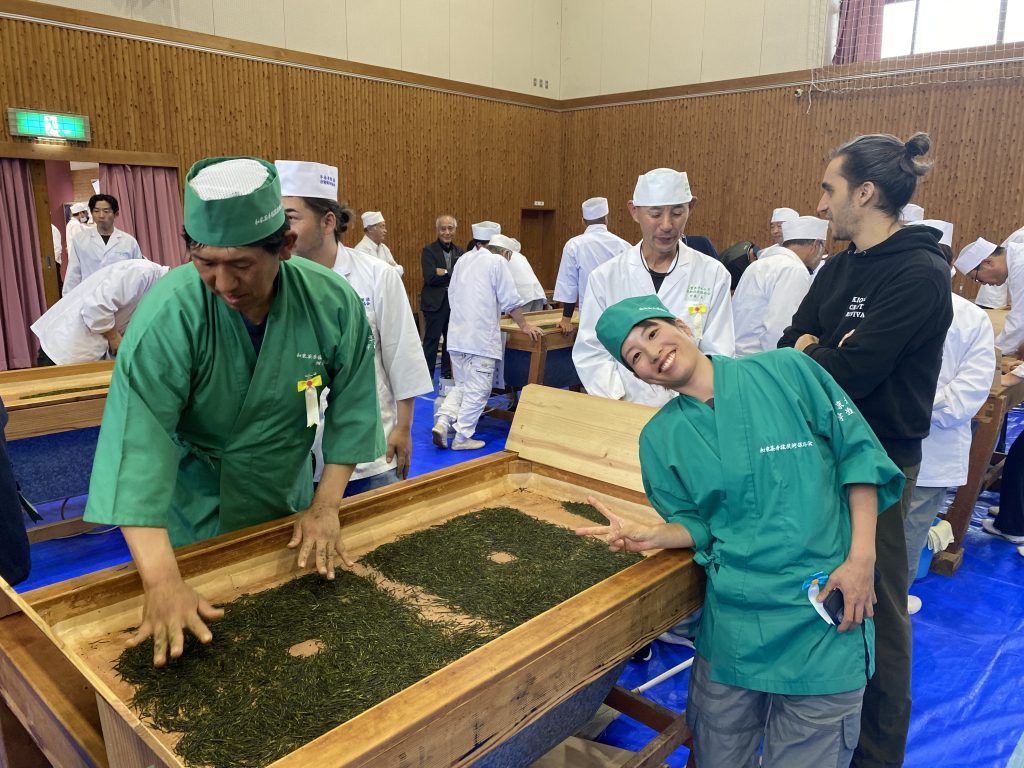
It was an honour to participate, especially considering I’ve only been learning temomicha for a year. I couldn’t have been luckier with my teammates—someone as skilled as Kenta-san and my beloved senpai Miwako. Truly teammates straight out of a dream, along with all the association members who joined and supported us. It made me feel deeply grateful once again to be part of this beautiful community in Wazuka. Moments like this feel pivotal in one’s tea journey, keeping curiosity and passion glowing bright.
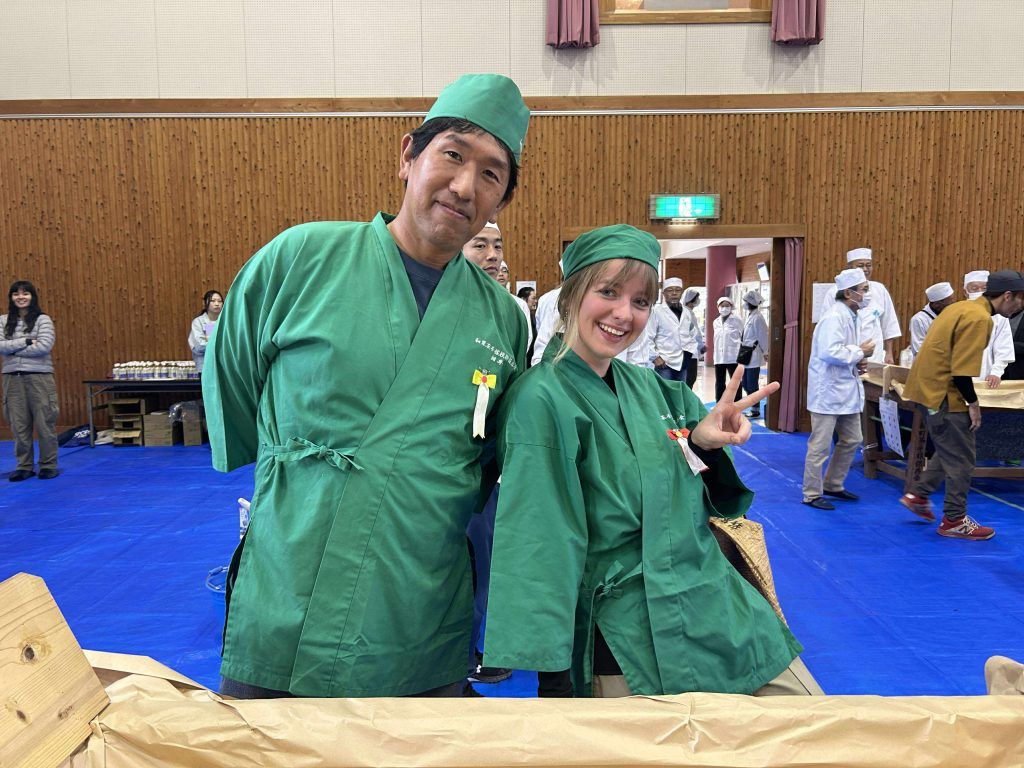
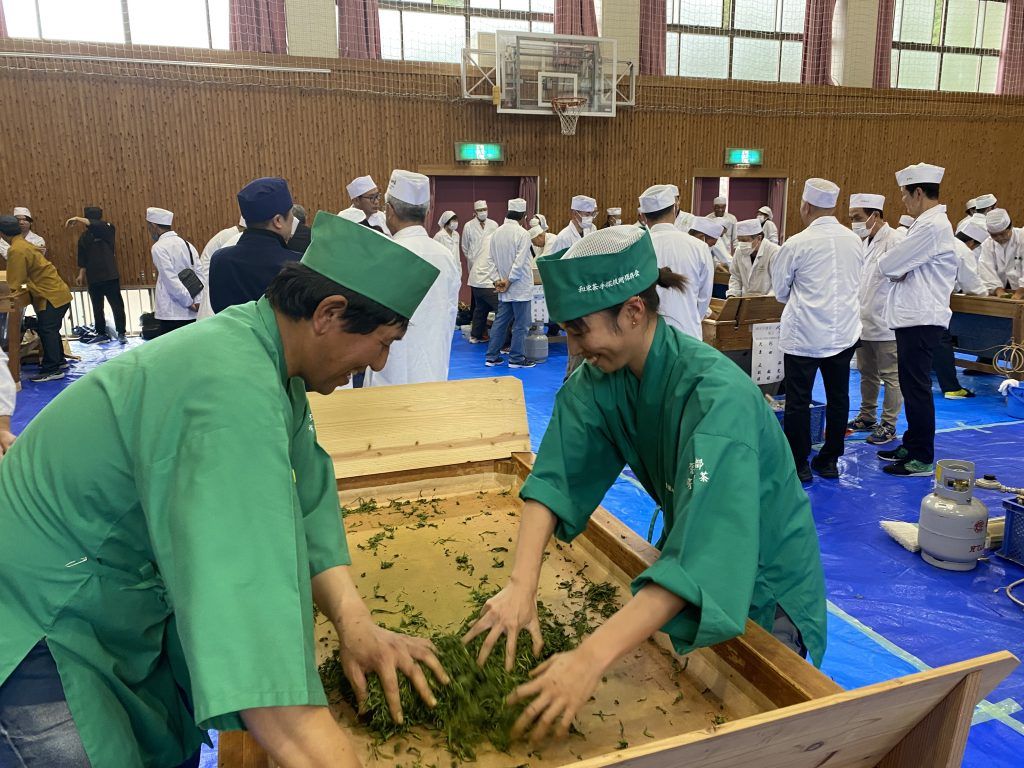
This year’s first place went to the Shizuoka Prefecture Hand-Rolling Preservation Society Fuji Branch; second place to the Nara Hand-Rolled Tea Promotion Association Team A; and third place to the Shizuoka Prefecture Tea Hand-Rolling Preservation Society Fujieda Branch. Congratulations to all the winners! While we didn’t place top this time, being there felt like the biggest win already—we learned so much. The experience left us profoundly inspired to continue studying this wonderful craft of hand-rolled sencha. Another special thanks to Akky-san and Miwako who organised a last-minute practice session a few days before the competition (can you hear the Rocky soundtrack?), and Florencia for rolling with us that night!
Our last temomi workshop of the year will be held on the 2nd of December with Kenta-san, so please feel free to sign up for this fun and unique tea-making class HERE. Dates and reservations for next year are already available as well.
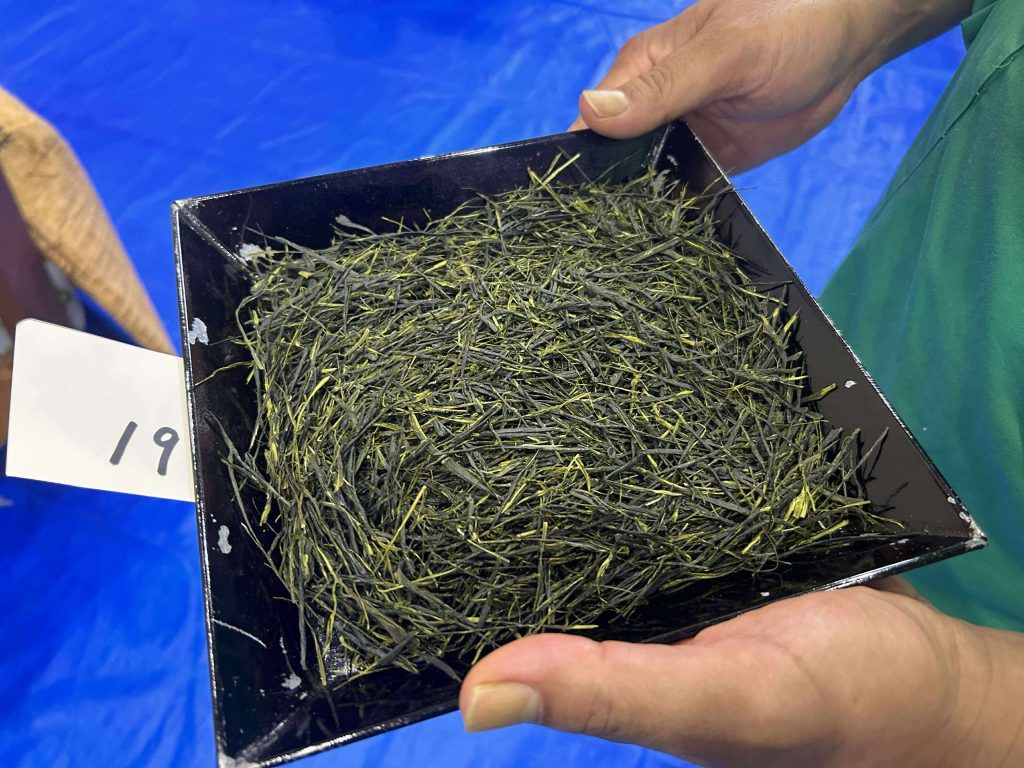
After the competition, we took a tea break at Gyokuro no Sato’s famous tea house Hyogetsu-tei, whose design draws inspiration from the moon and from gourds. In one of the tea rooms, where the host kindly welcomed us, a calligraphy of ichi-go ichi-e beautifully decorated the tokonoma (very symbolic as we talk about this proverb during our tea tours). Some of us enjoyed matcha, others gyokuro, and a few susuricha. At the far end of the grounds, we found Hyouan, a tea ceremony room with a water closet on a three-mat platform. The entrance is the famously narrow nijiriguchi, which requires guests to stoop as they enter—symbolising that everyone, regardless of status, is equal within the tea room. Sen no Rikyu, the renowned tea master of the Sengoku period, is said to have introduced this idea.
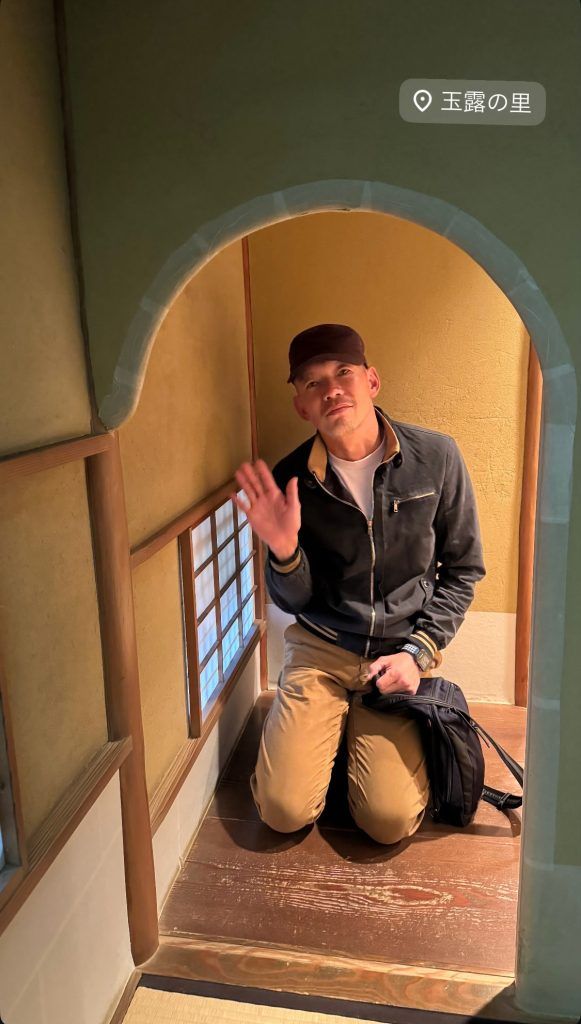
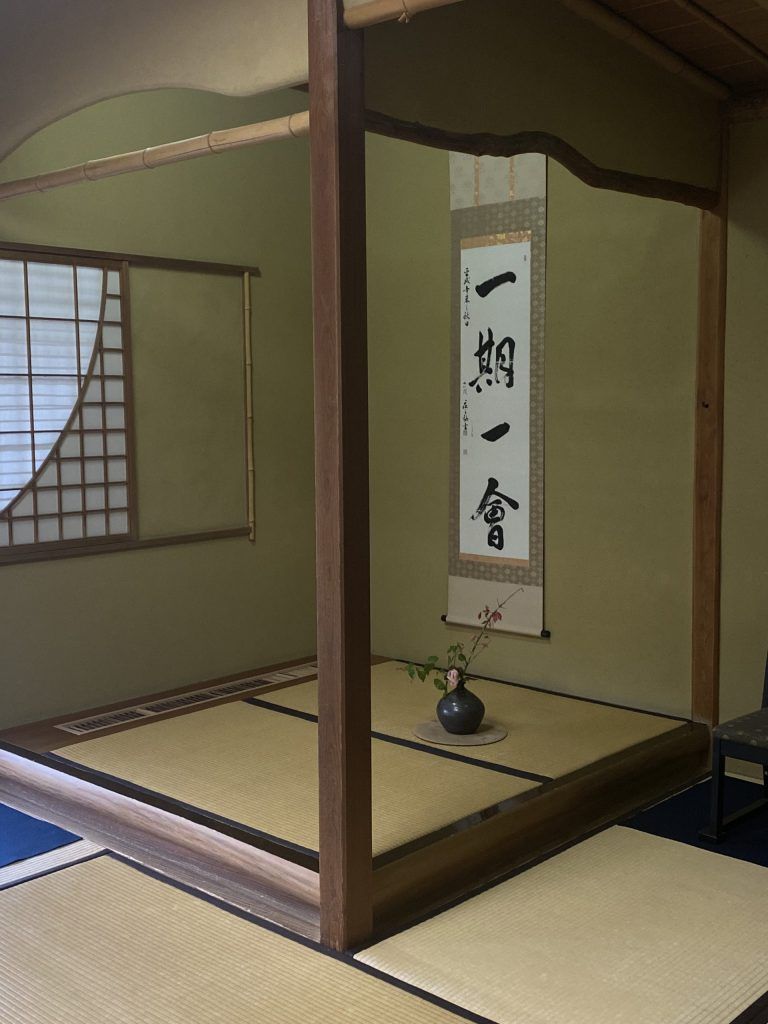
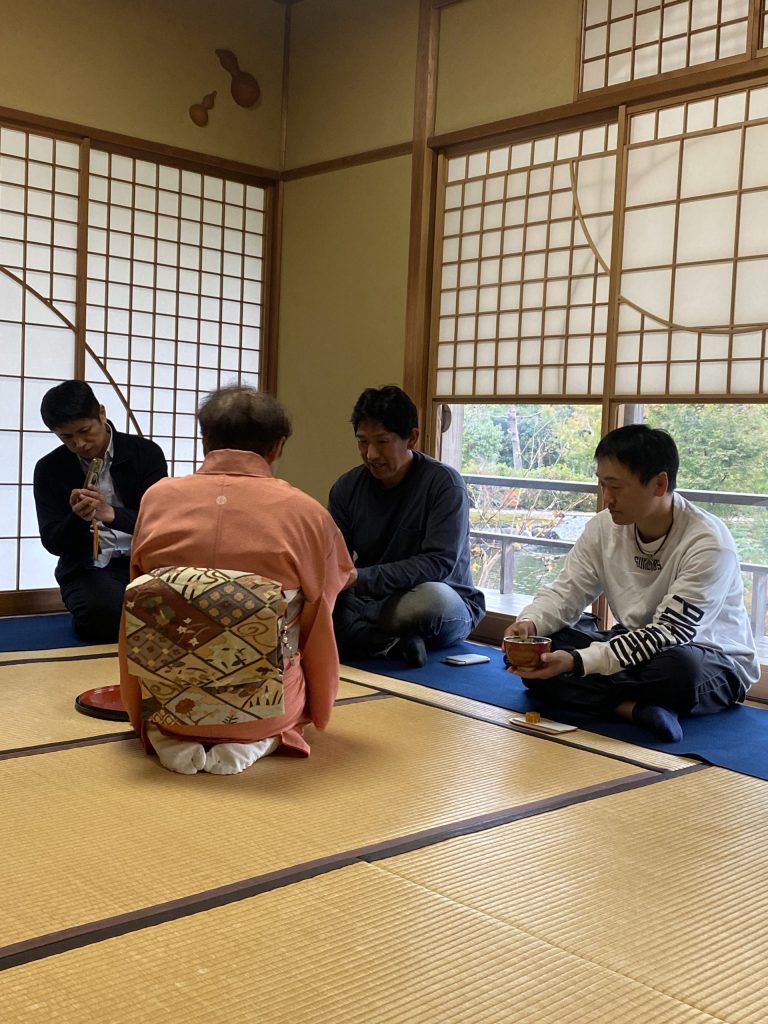
The next day, after a much-needed rest, Kenta-san put together a wonderful itinerary of tea shops and farmers for us to visit while in Shizuoka. Our first stop was Yamaka Katsuyama Shoten (株式会社ヤマカ勝山商店; Google Maps; Instagram), a wholesale tea shop (tonya-san). There, we evaluated around ten different senchas: asamushi, chuumushi, fukumushi, and cultivars such as Yamakai (the owner’s favourite), Saemidori, Asatsuyu, Asanoka, Tsuyuhikari, and Shizu- 7132 (Machiko).
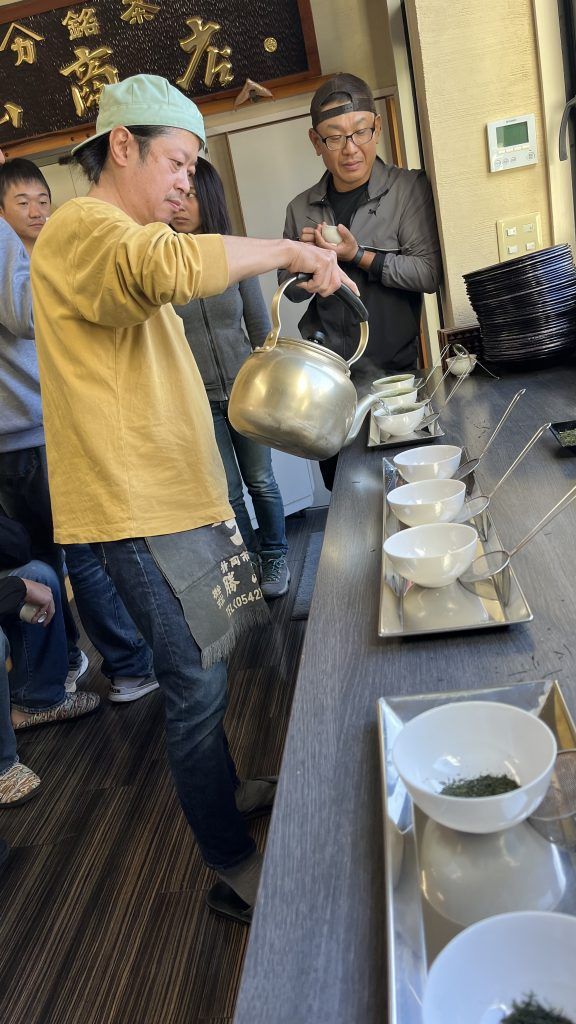
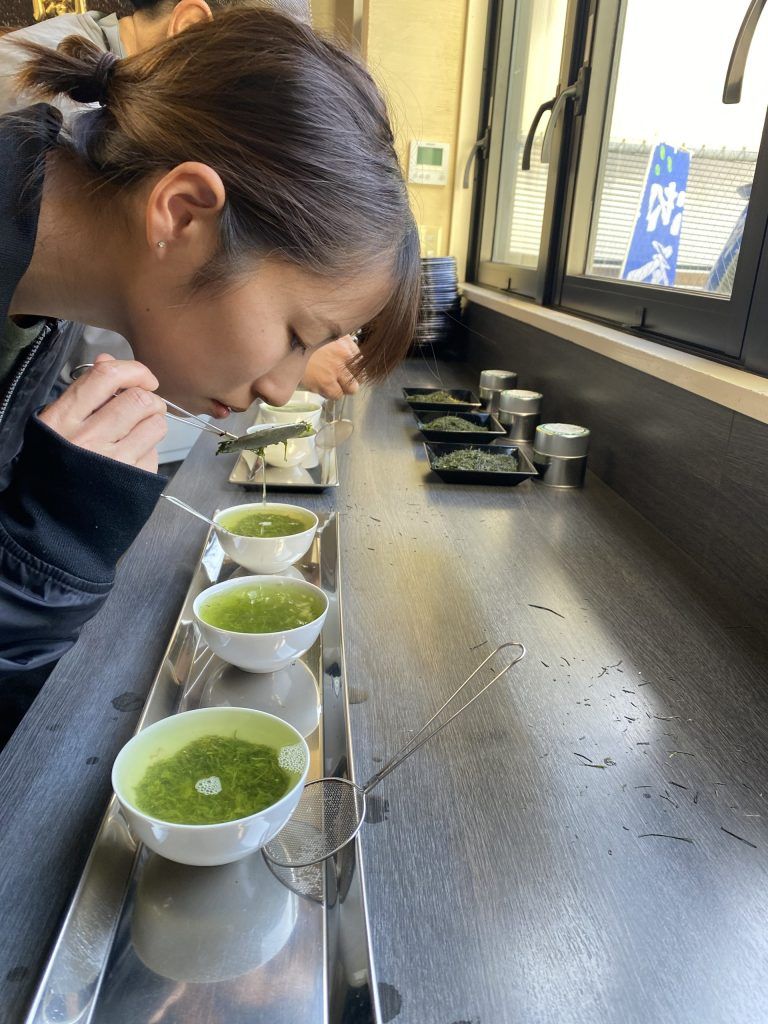
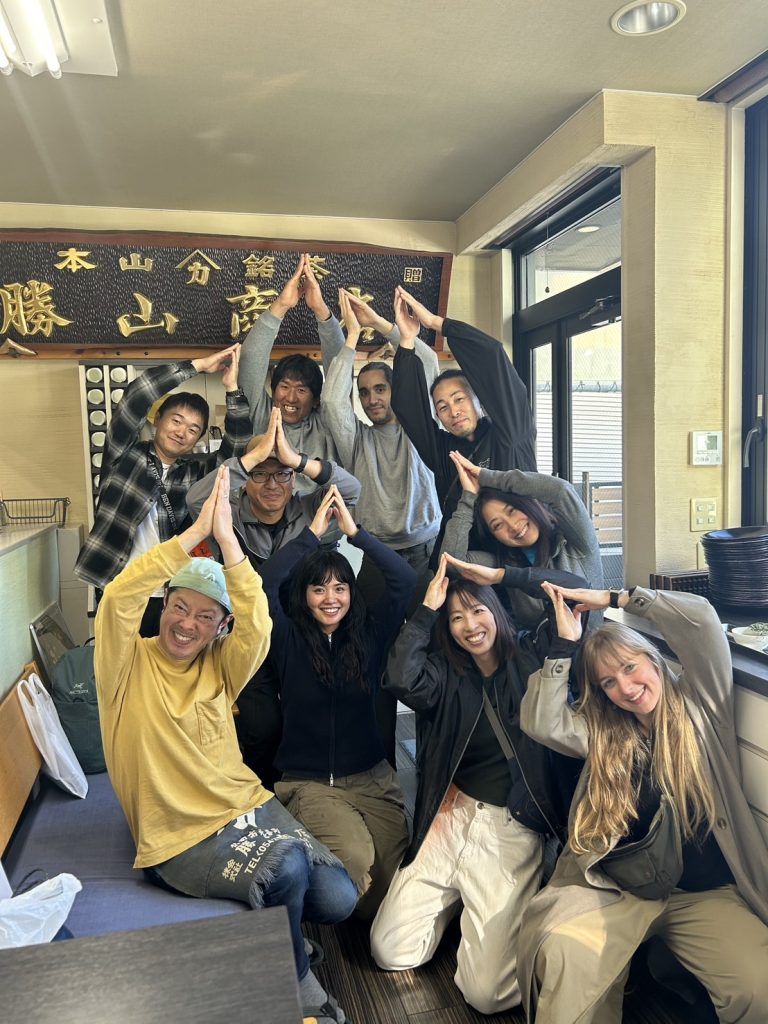
After a considerable amount of sencha (and a soba lunch), we headed to our next destination: Chaya Suzuwa (Google Maps; Instagram). We were welcomed with a delicious cup of Koushun cultivar sencha and many warm conversations. Most of us couldn’t resist buying a copy of the newly published book on tea evaluation room designs in Shizuoka (拝見場図鑑), and the owner even kindly stamped our books with the store’s hanko.
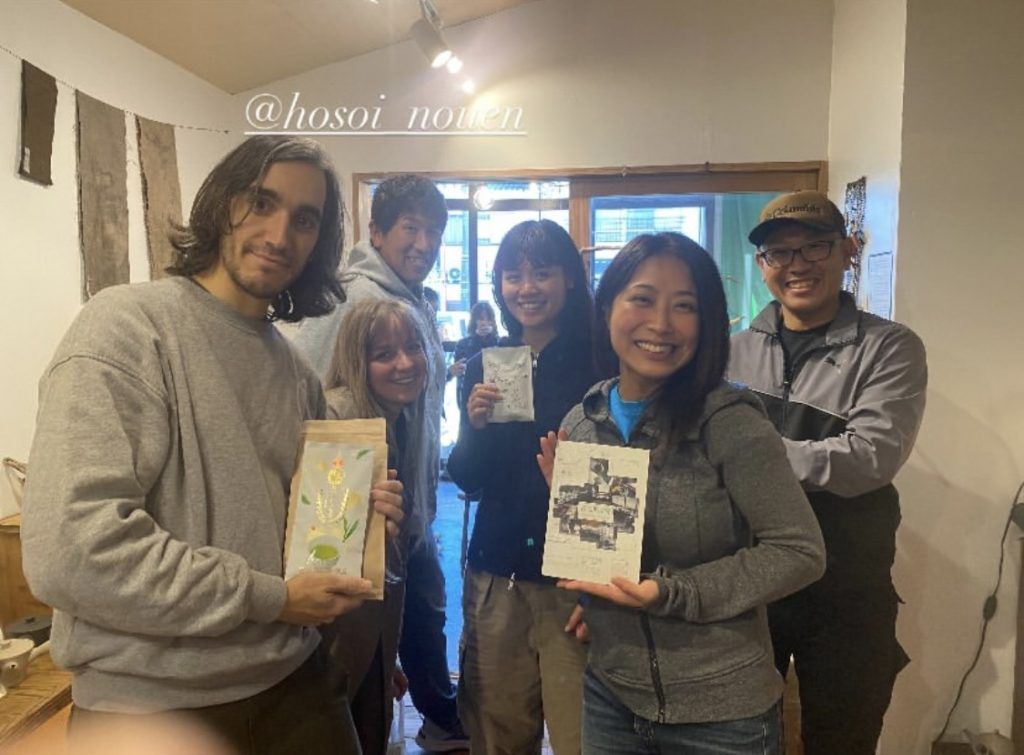
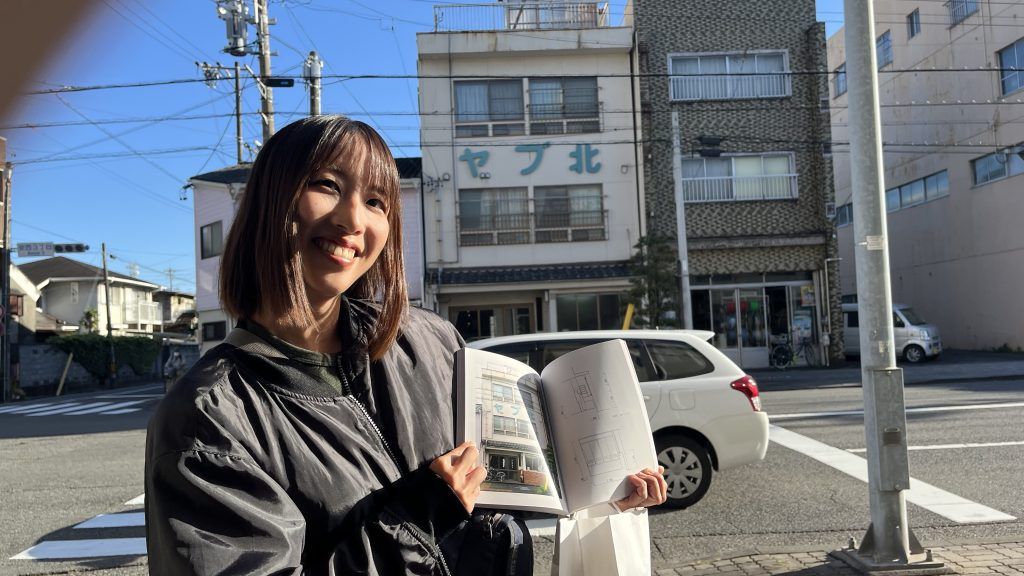
Finally, before returning to Wazuka, we visited Imura En (Instagram). We were treated to a tasting of their remarkable teas—from withered kamairicha, white tea, and oolong to a wide range of expertly crafted black teas, some of which have won Nihoncha Awards. We even tasted their Oriental Beauty and Silver Needles. After many cups of exceptional tea, the family kindly gave us a tour of their factory. It was utterly fascinating: two floors of tea machinery arranged in an incredibly thoughtful, compact layout. It felt almost like stepping into a tea factory in a Ghibli universe. We left with so much inspiration from these fellow farmers, and plenty of new ideas for black tea making next year!
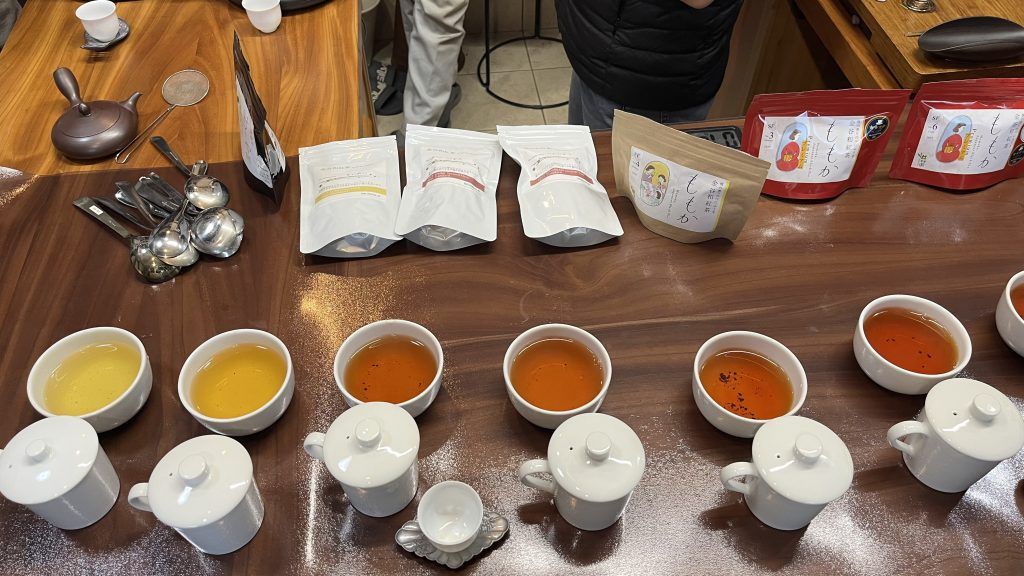
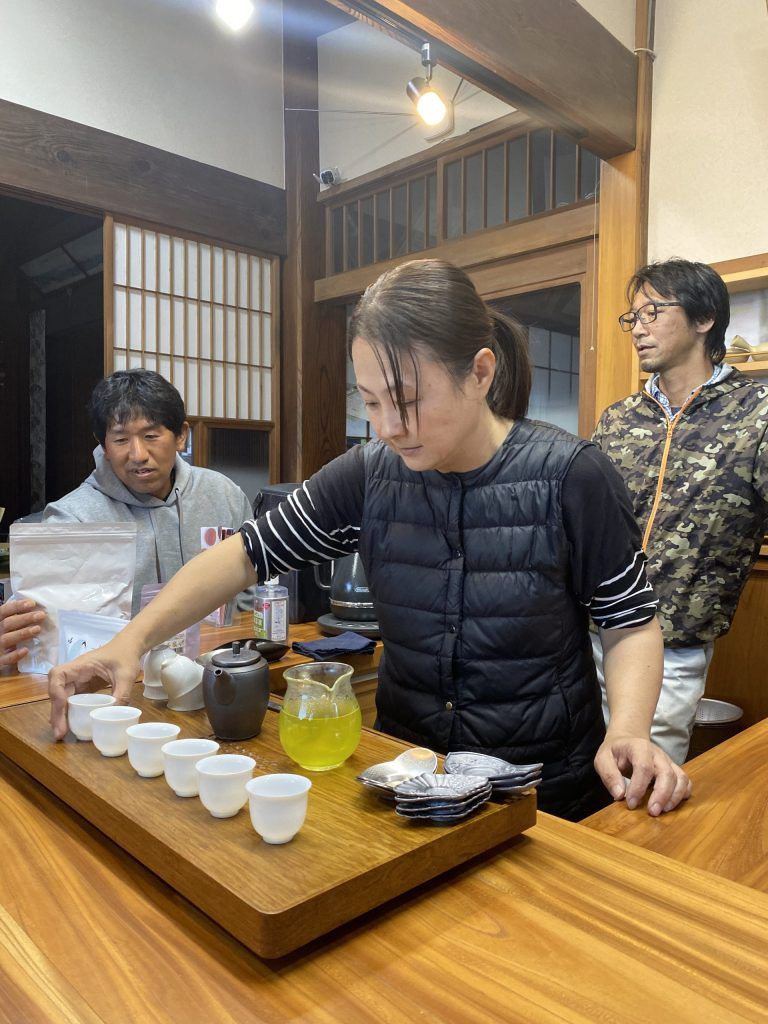
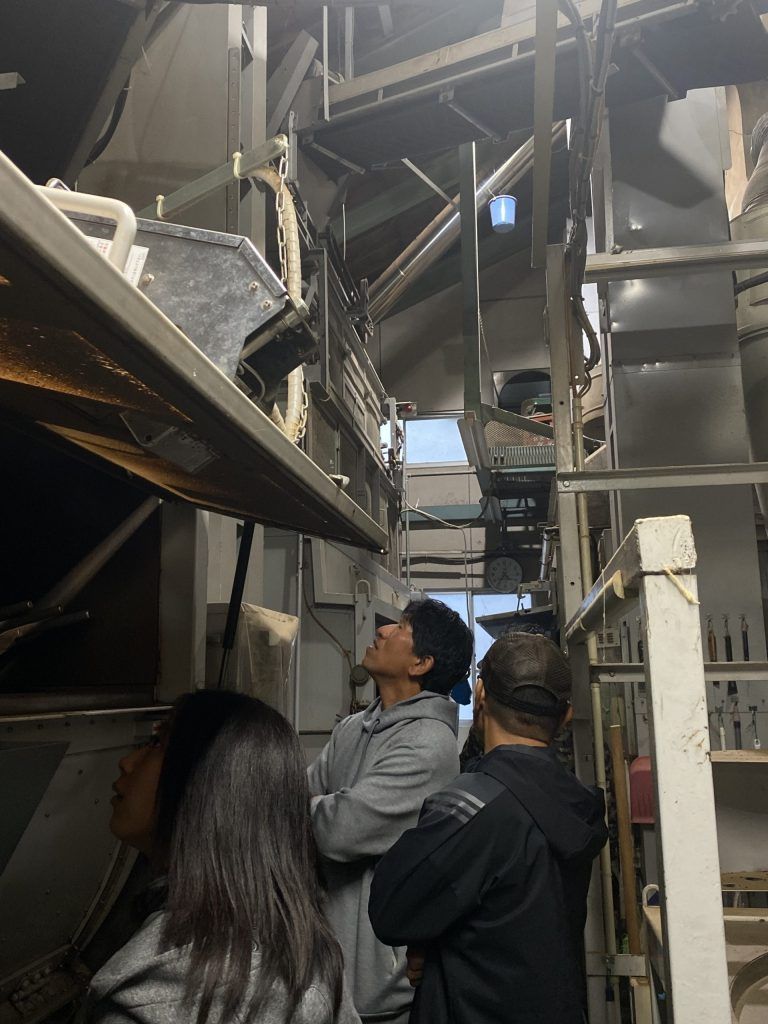

We will continue doing our best! Thank you so much for this wonderful opportunity, Kenta-san!
Photos by Pau, Miwako, Nanako, and myself.

